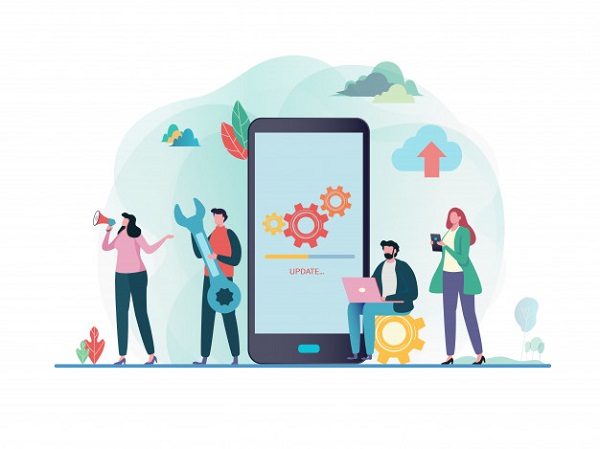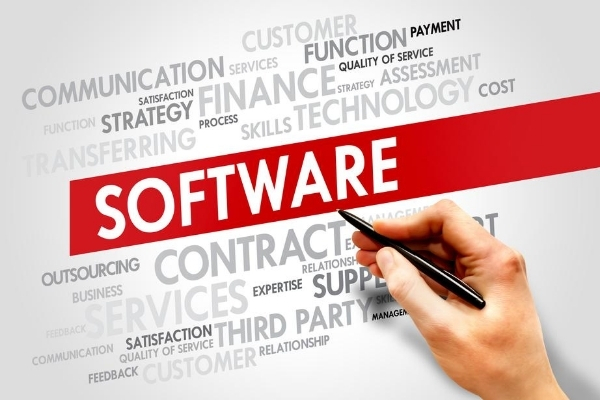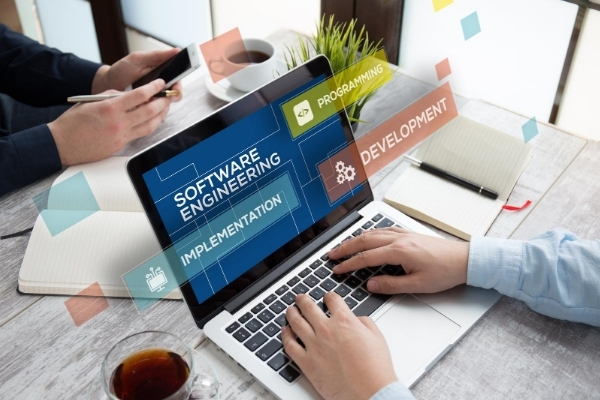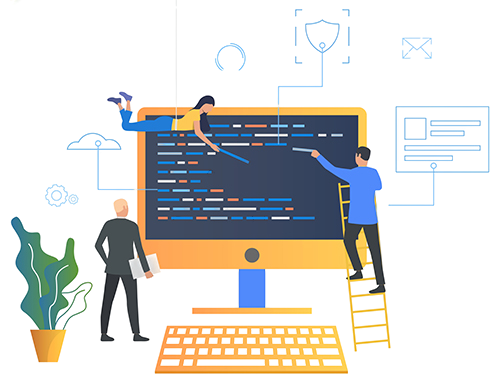
Software, whether for business or recreation, is an integral part of modern society. From children to adults, everyone relies heavily on strong apps and service-backed software for different tasks. This technology dependency is derived from the promise that software and services are secure and reliable.
The traditional development of software is concerned with creating software by code writing and following certain rules that are set. The latest generation of tech, however, saw a paradigm change in developments in artificial intelligence, computer education, and profound learning.
By combining these three technologies, developers can create software applications that understand the instructions and incorporate additional data features and patterns required for the desired result.
The engineering of software is important as unique software is essential in almost all industries, businesses, and functions. It becomes more critical over time-if anything breaks out in your application portfolio, it needs to be remedied as quickly, efficiently, and effectively as possible.
Software development should be organized and very well planned or it can get really messy very soon. Check out some best practices of software development in detail.
Table of Content

A technique for developing software is a framework for structuring, planning, and managing the software product life cycle.
Popular methodologies include waterfall, prototyping, iterative and incremental development, spiral development, agile development of software, the rapid development of applications, and extreme programming.
The life-cycle of creation is highly dependent upon the method adopted. The waterfall model, agile technique, the iterative approach to spiraling are all established ways of performance. It is of utmost importance to choose the one which fits the specific project.
The real commitment to and execution of the method chosen is what plays out in the project’s progress. Making a small prototype is often a good idea to study the feasibility or explore new technology.

Gathering the requirements is typically the first phase of any software product. This process starts when you think about software development.
In this step, you meet clients or prospective customers and evaluate consumer needs and demanding features. You can also find out if the software product you want to build is really needed in the market.
The keys to success in this process include a thorough understanding of the consumer needs and writing down features of the new software product. In fact, this phase is a foundation for the entire development effort.
When the foundation is not properly laid, otherwise the product does not find a marketplace. When you are designing a really good software product that’s not needed in the market, it doesn’t matter how well you’re creating it.
There are several stories that you can find about the software products that failed in the market because they were not needed by the customers.

To ensure the success of the software, it is important to hire talent with the right skills and relevant experience. The right job should also be assigned to the right guy. Similarly, it is also important to invest in resources that maximize performance and profitability for the team.
The latest desktops or laptop, suitable upgraded equipment, software, and platforms for production and testing and automated instruments will allow the crew to use their expertise and ensure a sturdy product.

More than one document can be included in functional requirements. Documents of technical requirements display a software product’s actions or features abstractly. If the product is a black box, the functional specifications specify the input/output behavior.
Functional specifications are centered on the product requirements documents put forward by people who have interaction with the end-user of the product or the customers. Functional requirements for larger products can consist of separate documents for each product feature.
Functional specifications are necessary because the developers should create meaningful design documentation. This is also used to make manuals by the people who are managing documentation for end-users.

After the first phase of the requirement setting, the time comes to define the system architecture and hardware specifications.
Here’s where you can assess the look and feel of the submission, and you can decide what code type. It is the turn of the technical architecture team, consisting of highly trained technical experts, to design the product architecture. The architecture defines the various components of the product and how they interact with each other.
In several cases, the architecture often determines the technologies used to create the product. The team must also remember the project schedules when producing architectural documents. This refers to the launch date on which the product is supposed to be on the market.
Many excellent goods fail because they are either too early or too late to be placed on the market.
The next stage of development is designing software, after identifying the architecture, software components, and their interfaces.
A component is known as a black box with certain functionalities at the architectural level.
The modular and optimized design should be available. A project can make or break through the balancing and distribution of functionality over modules. One technique that ensures modularity is the object-oriented approach.
The designers must ensure that the chosen solution is used such that “maximum cohesion and minimal coupling” is achieved. Code reusability is typically an underused feature of the design, which can save a lot of energy and reduce cost in the long run when properly leveraged.

A typical software project can contain hundreds to thousands of files from everywhere. Someone needs to determine a hierarchy of directories in large and complex projects to store files in the correct locations.
Multiple people can change files during the development process. This will easily interrupt the entire build and compilation cycle if anyone does not obey the rules.
The software developers take the software design documents and creation tools and start writing applications.
This is typically the longest stage of the life of goods. Each developer must write its own code to ensure that different components interoperate with each other in cooperation with other developers. In this step, a revision control system such as CVS is required.
In the course of the implementation process, developers must make adequate changes in the code to allow them to understand what is already written if someone starts working on the code later.
It is really important to write good reviews, no matter how good they are, because all the other records will inevitably be lost. Ten years after the initial research, you can only find details in the form of comments inside the code.
A good practice is commonly implemented with the use of smaller modules coded, self-tested, unit-tested and continuously integrated.
In order to ensure that current functions are not disrupted, it is recommended that automatic tools be installed and that regression test suites be run for each function.

Probably for the long term support and credibility of the product, testing is the most significant step. You can’t compete with other goods on the market if you don’t control the software’s consistency.
When customer-specific software crashes at the customer’s site, you lose functionality and credit. Such losses are often huge, dissatisfied buyers won’t buy their own goods and won’t refer you to other buyers.
In most software applications, this function is known as Quality Assurance or QA.
To validate the developed functionality, test preparation, set-up, and testing are of great importance. In fact, testing should be coding independently and can be carried out in accordance with coding.
Test reporting, effective reporting of defects, monitoring of defects, and resolving are equally important. Using automated software and well-defined processes to detect bugs and solve cost-effectively at the earliest possible stage.
Several test types are unit tests, integration tests, feature tests, device tests, and tests for results. The skills, preparation, and execution are needed at all levels.

It is officially released before you start selling any software product. This implies that you are building a software state in your server, make sure it is fully checked and code freezes.
A published software version number is allocated. The development will continue after the release of this program but does not modify the program. The development typically continues in a different branch and will include new product features.
The program is only modified when a patched bug has been released.

The documents supporting the project plan, requirement requirements, high-level design (HLD), low-level design (LLD), test schedules, test reports, statements, and user documentation are just as critical as the actual software itself.
Many times, these documents are also part of the customer’s or partners’ deliverables. These documents help retain the software’s understanding, ensure monitoring, and reduce dependency on the core development team. In addition, they may be used as a guide for anyone who might use the program or work on it.

When you begin to sell a software product, your customers need help. The customer needs the assistance to install the software and get going. The most common customers’ supports are like: Customer wants help with the installation and start-up.
They might notice a bug and want a fix or upgrade to the entire system as soon as possible.
Or maybe the customer is not satisfied with the existing features and asks for something new. You have to be always prepared for it.
You will want to add new features to the product during the following update, as the products of competitors have other better features. Better service will improve the loyalty of your customers and build a reference market for you.
The software should be frequently updated to fully meet the requirement of growing trends.
These are the best practices that you need to know while developing software.
There are many ways to improve your software development skills but these practices will make your experience easier and faster. Wishing you good luck with your next software development project.
Whether you are a beginner or completely new to software development, this blog will be helpful to you. If you found it to be useful and informative please let us know in the comment section below.